🏔️ Annapurna Luxury Trek Overview
Not everyone wants to rough it in the mountains, freezing their toes off and eating dal bhat for the tenth day in a row. Enter the Annapurna Luxury Trek, where you get all the epic mountain vibes *without* giving up your creature comforts. We’re talking plush lodges with jaw-dropping views of Annapurna and that pointy Machapuchare peak (you know, the one that looks like a fish tail?), hot showers, and beds you might actually want to sleep in.
You’ll cruise through Nepal’s dreamiest villages—Ghandruk, Landruk, Dhampus—on a route that’s equal parts culture trip and nature flex. No dodgy tea-house drama here; it’s gourmet meals, private jeeps instead of bone-rattling buses, and rooms with actual en-suite bathrooms. The pace is chill, so you won’t spend your whole holiday gasping for air and cursing your life choices.
Seasoned trekker or just someone who likes their adventure with a side of luxury? Either way, this is the move. You get local guides who actually know their stuff, and every detail is sorted for you. It’s basically a spa break—just, you know, with Himalayan panoramas instead of cucumber slices.
Okay so the trail? Chill. No scrambling over boulders or dying for air. You’re mostly walking through forests, stone steps, and open ridges. Altitude stays pretty friendly — max is like 2,100 to 2,500m, so no headaches, just good air and even better views. The Annapurna range is just there the whole time, like boom — snow, clouds, and that weirdly perfect fishtail peak (Machapuchare). You hit villages like Ghandruk and Landruk, and they’re straight out of postcards, except you’re actually there and the lodges serve bomb food. Best stretch? That curve before Dhampus — dead quiet, birds going off, and the whole mountain lineup smacks you in the face. Not dramatic, not extreme. Just real pretty, real peaceful. Feels like walking through a screensaver, but with hot showers after.
Nature & Wildlife on the Annapurna Luxury Trek
You start walking, and honestly? It doesn’t hit you right away. But then you notice the trees — tall, twisted oaks, thick bamboo patches, and these massive rhododendrons that feel like they’ve been standing there forever. If you’re going in spring, the flowers go wild. Whole hillsides just lit up in red and pink. Around Ghandruk, it’s almost like walking through a garden that nature forgot to lock. Everything smells fresh. Damp. Clean.
Birds are always there. Not loud, but constant. Some you’ll recognize, some just flash by — one of them looked like it was dipped in oil paint, and my guide said it was a Himalayan monal. There were others I couldn’t name — bright little things, hopping in the bushes. One day, I stopped mid-trail near Landruk because a couple of gray langurs were just chilling in a tree like they owned the place. No one else noticed. That kind of moment just comes and goes.
And it shifts as you go. Around Dhampus, the forest opens up. Less thick. You get pine trees, dry moss hanging off the branches, and more open views of the valley below. It’s quieter there, more wind. You might spot animal prints in the mud — my guide said some were from musk deer, maybe even bears, though we didn’t see any (kind of glad, honestly).
You’re walking through layers — real vegetation zones changing with every hour. You don’t need to understand biology to feel it. The whole thing just breathes different at each stop. Some parts hum with birdlife, others are just still. It’s not loud nature. It’s the kind that sneaks up on you, slow and calm and alive in the background. I don’t know how else to put it — it’s just there, holding the space while you walk through it.
Annapurna Luxury Trek Route Overview
Alright, picture this: you land smack in the middle of Kathmandu, and the place is buzzing—smells, colors, bikes weaving past like they’re in a video game, the whole nine yards. You could be temple-hopping, getting lost in some ancient alley, or, hey, maybe you splurge on that Everest flight and just ogle the mountains from way up. Either way, Kathmandu’s got this infectious energy that sort of winds you up for what’s coming next.
Next thing you know, you’re on a flight (blink and you’ll miss it) to Pokhara. Whole different vibe—chill, lakeside, mountains looming in the distance like some kind of postcard. Pokhara’s basically the front door to the Annapurna trails, and yeah, it’s as pretty as they say.
Then it’s time to hit the road—literally—to Nayapul, where your boots finally hit dirt. First stretch to Birethanti? Super mellow. You’re just following the river, taking in green valleys, easing into it. No one’s gasping for air yet. Then comes the climb to Ghandruk. Yeah, you’ll feel the altitude a bit (pushing 2,000 meters), but honestly, it’s worth it. You get those old-school mountain villages, Annapurna South and Machapuchare just flexing in the background, and rhododendrons everywhere if you’re lucky enough to catch spring. Plus, the locals? Gurung hospitality is the real deal—think stone houses, big smiles, probably some dal bhat if you’re hungry.
The trail winds on through Landruk and Majgaon. The landscape keeps switching it up—terraced fields, pine forests, it’s like a greatest hits of Himalayan scenery. And the altitude stays friendly (somewhere between 1,500 and 1,800 meters), so you can actually enjoy the walk without turning into a wheezing mess. These villages? Way less crowded than the big-name spots, so you get a taste of real mountain life with zero stress.
Last leg’s a short trek to Lumle, and man, the views just keep leveling up. Annapurna range stretched out, Machapuchare doing its dramatic “look at me” thing. Then it’s back to Pokhara, where you can kick back by the lake, go for a boat ride, or just wander the markets and snack on street food. Eventually, you catch a flight back to Kathmandu for that last dinner with your crew—probably swapping stories, showing off blister scars, the whole sentimental shebang.
Honestly, this route is kind of the sweet spot—big Himalayan views, all the culture and village charm you want, but without the misery of hardcore trekking. If you’re after a luxury hike with all the wow-factor and none of the “what am I doing with my life?” moments, this is the way to go.
🌄 Annapurna Luxury Trek Major Highlights
Alright, picture this: twelve days of jaw-dropping mountain views, not a sore back in sight, and zero arguing over who gets the “good” bed. Yeah, this Annapurna luxury trek is basically the cheat code for folks who want their Himalayas with a side of hot showers and fluffy pillows. You get the best of both worlds—killer scenery and, honestly, some of the coziest lodges around. Here’s why this trek’s got “bucket list” written all over it:
- You’ll wander right through forests that look like they’ve been cranked up to “maximum bloom”—rhododendrons and oaks, especially insane in spring.
- Those panoramic shots of Annapurna South and Machapuchare? They’re not just Insta filters, they’re real, and you’ll see ‘em from viewpoints that make you forget about your phone for a second.
- Ghandruk village is straight outta National Geographic—Gurung culture, real-deal hospitality, and enough charm to make you want to stay forever.
- Trails are mellow (for the Himalayas), weaving through terraced fields and forests, nothing too high—no gasping for air like you’re on Everest.
- The lodges? Think private bathrooms, actual beds, and Nepali meals that’ll ruin you for generic “trekking food” forever.
- Sunrise and sunset here hit different—watch the mountains glow gold from peaceful ridgelines near Dhampus and Landruk.
- Feeling extra? Grab a scenic flight and look Everest from the sky. Bragging rights included.
- Pokhara’s lakeside scene is practically a spa day for your brain before you even start hiking.
- Forget those bone-rattling bus rides—private jeep transfers mean you roll up fresh, not frazzled.
- Wildlife? Himalayan monals strutting like runway models, tons of birds, and if you’re seriously lucky, a musk deer cameo.
- Each stop feels like a mini-retreat—spa vibes, warm blankets, and staff who know how to treat you right.
- Local guides are legit—storytellers, mountain pros, cultural translators. They’ll probably know your coffee order by day three.
🌦️ Best Seasons to Trek Annapurna Luxury Trail
So, you’re wondering, “When should I hit up the Annapurna Luxury Trek?” Well, buckle up, because the answer kinda depends on your vibe—are you chasing epic views, wildflowers, or just want to dodge the crowds? Here’s the real scoop on when to go.
Autumn (September to November)
Honestly, if you wanna see the Annapurna region at its absolute best, book it in autumn. After the monsoon, the skies are so clear it’s almost rude, and those mountain views—Machapuchare, Annapurna South—total showstoppers. Temps? Pretty much Goldilocks: comfy, not freezing, not roasting. The forests are all lush and alive, birds everywhere, and the air smells ridiculously good. Trails are dry, so no slipping around like Bambi on ice. Bonus: you might stumble into a local festival, which is always a win. If you’re after that “perfect Insta shot meets spiritual awakening” kind of trek, autumn’s your jam.
Spring (March to May)
Spring is a close second, and honestly, it gives autumn a run for its money. Picture this: hills blasted with rhododendron blooms, everything’s pink and red, and the weather’s finally warming up. The air’s fresh, the wildlife’s out doing their thing, and it just feels alive. Early spring can still get a bit nippy, especially after sunset, but most days are just right. Plus, fewer people clogging up the trails compared to autumn. If you’re a sucker for wildflowers and want to feel like you’re trekking through a Bob Ross painting, this is your season.
Winter (December to February)
Winter’s kinda underrated, not gonna lie. Yeah, it’s cold—bring some legit layers—but the trails are quiet, so if you hate crowds, jackpot. The sky’s usually crystal clear, so those mountain views? Chef’s kiss. Snow’s rare unless you’re venturing higher, and even then, it’s more of a sprinkle than a blizzard on the main trek. Some fancy lodges might close or scale back, but if you’re cool with simple comforts and want peace and quiet, winter’s a solid move. Just don’t expect every trail to be open.
Monsoon (June to August)
Alright, full disclosure: monsoon trekking is for the brave (or the stubborn). We’re talking heavy rain, slippery mud, and mountains playing hide and seek behind thick clouds—mostly just hide, actually. Landslides? Yep, sometimes. Trails can close, and your gear will be soggy 24/7. The forests go full green mode and it’s weirdly beautiful, but you won’t see much beyond your rain jacket’s hood. On the plus side, you’ll have the place to yourself. If you’re into solitude and don’t mind getting drenched, go for it. Otherwise, maybe plan around these months.
🍽️ Dining & Lodging on the Annapurna Luxury Trek: Comfort at Every Step
Alright, so let’s talk Annapurna Luxury Trek. If you think “luxury” and “Himalayas” don’t belong in the same sentence, man, you’re in for a surprise.
🛌 Luxury Lodging in the Heart of the Himalayas
Forget those rickety teahouses where hot water is a myth and you’re sharing a bathroom with half the mountain. Nope. On this trek, you’re shacking up in boutique lodges and eco-resorts that’ll make you forget you’re, you know, thousands of meters up. We’re talking Ker & Downey, Mountain Lodges of Nepal—places that actually care about what your bed feels like after a ten-mile hike. You get your own room, a legit bathroom with hot showers , heated blankets , sometimes even a crackling stove that makes you feel all cozy and adventurous at the same time.
The views? Ridiculous. Balconies and giant windows in the lounge where you basically get a front-row seat to the Annapurna range without ever moving your butt. You want gardens? They’ve got gardens. And if your legs are screaming, there’s usually someone around to offer a massage and a mug of herbal tea you didn’t know you needed. Seriously, even the hospitality feels next-level—like, “Oh, you trekked all day? Here’s a warm towel and a smile.” It’s wild.
Ghandruk, Landruk, Dhampus—doesn’t matter where you crash, you’ll sleep great with comfort. You might even forget you’re trekking.
🍲 Fine Dining at High Altitude
Okay, food. This isn’t your standard “dal bhat or bust” situation. Sure, you can still get all the Nepali classics—dal bhat, momos, thukpa, you name it—but you’ll also see menus that wouldn’t look weird at some hipster café back home. Eggs, pancakes, fresh fruit for breakfast. Maybe a curry or pasta for lunch, or grilled chicken, or whatever fusion thing the chef’s feeling. Dinners? Multi-course, baby. Soup, mains with roasted veg, chocolate cake for dessert.
Everything’s fresh, clean, and you can actually ask for vegan, vegetarian, gluten-free—no one’s giving you side-eye. And don’t even stress about water. They’ve got you covered with boiled or filtered water, and half the time there’s real coffee, herbal teas, even juice if you’re lucky.
🧼 Hygiene, Safety & Personalized Service
Look, hygiene’s a big deal up here, and these places know it. Kitchens are spotless, dining rooms get wiped down, staff actually knows what they’re doing. You won’t be praying to the porcelain gods from a dodgy dal bhat, promise.
And the service? Next level. Hot towels when you show up, room service, someone hauling your bag so you can pretend you’re effortlessly trekking, and even nightly briefings so you don’t wander off a cliff the next morning. It’s all pretty slick—feels more like a fancy retreat than a trek half the time, but hey, your legs will still remind you you’re in the Himalayas.
✅ Trekking Permits & Regulations for the Annapurna Luxury Trek
Before stepping into the lush hills and majestic mountain trails of the Annapurna region, there are a few important permits you’ll need to have in place. Even though you’re going the luxury route—with cozy lodges, personal guides, and curated experiences—the trekking permits remain the same as any other trekker. The good news? If you’re booking a guided Annapurna Luxury Trek, your agency will take care of all the paperwork. But it’s still smart to understand what’s required and why.
Here’s a breakdown of the permits needed for your Annapurna adventure:
1. Annapurna Conservation Area Permit (ACAP)
This is non-negotiable—anyone entering the Annapurna Conservation Area (ACA) needs this permit. The ACA is a protected region rich in biodiversity, culture, and natural beauty, and this permit fee goes toward its upkeep.
Where to get it:
- Kathmandu: Nepal Tourism Board Office
- Pokhara: Nepal Tourism Board Office
- Or handled by your trekking agency before the trek
Cost:
- NPR 3,000 per person (around USD 23)
- No time limit—valid for the entire duration of your stay within the conservation area
Documents required:
- 1 passport-sized photo
- Photocopy of your passport
(📝 Note: This permit is mandatory even if you’re doing only a few days of trekking in the Annapurna region.)
🟦 2. Trekkers’ Information Management System (TIMS) Card
This card is used to register trekkers with the national database for safety, rescue, and monitoring purposes. For the Annapurna region, the TIMS card is required only for solo and FIT (Free Independent Trekker). If you are trekking with an agency—which all luxury treks are—then TIMS is typically not necessary anymore, but rules keep evolving, so some agencies still process it.
Where to get it:
- TAAN (Trekking Agencies Association of Nepal) office in Kathmandu or Pokhara
- Or directly through your trekking agency
Cost (if applicable):
- NPR 2,000 (around USD 15) for individual trekkers
- NPR 1,000 (around USD 8) when trekking through a registered agency
(Note: As of recent updates, TIMS is sometimes replaced by local entry fees, especially in the Annapurna region, so always check with your agency.)
🟨 3. Local Government Entry Permit (New Rule)
Some municipalities in the Annapurna region have introduced local entry fees, especially for popular areas like Ghandruk and Tadapani, even if you already have the ACAP. These are separate from TIMS or ACAP and usually paid on-site.
Where to get it:
- At entry checkpoints or local ward offices along the trail
Cost:
- NPR 200–500 depending on the municipality
(Note: This fee is often not included in pre-arranged packages, so it’s good to keep some small Nepali currency on hand during your trek.)
Fitness Needed for Annapurna Luxury Trek: Difficulty & Prep Guide
Alright, let’s cut to it: the Annapurna Luxury Trek is about as cushy as trekking gets in Nepal. We’re talking warm beds, hot showers, and actual coffee in the morning. But don’t get it twisted—it’s not a lazy stroll where you just amble along snapping selfies. There’s still real hiking involved. You’ll wind through hills, ramble down stone steps, and wander those classic Nepali village trails. It’s comfy, yeah, but it ain’t the mall.
Altitude-wise, you’re chilling below 2,100 meters—think Ghandruk and lower. So, forget about headaches and sucking air like you’re on the moon (looking at you, Everest Base Camp). Altitude sickness? Nah, not really a thing here. But you’re still clocking 4-6 hours a day on your feet, dodging the occasional mud puddle or slick dew-covered rocks (especially if you’re brave enough to go during monsoon season—respect).
So, what do you actually need to get through this thing without feeling like a dying llama?
- If you can tackle a 7-10 km walk on some hills without needing an ambulance, you’re golden.
- Bit of cardio in your mix—run, bike, or brisk-walk your dog—will make your lungs and legs love you.
- Some basic leg power helps too. Squats, lunges, stair climbing, whatever keeps you from cursing those stone steps.
- Zero need for ice axes, ropes, or a mountaineering badge. If you’ve never trekked before, you’ll be fine. This one’s for the nature-curious, not just the hardcore crowd.
And the real cherry on top? Porters haul your stuff. All you gotta do is carry yourself and maybe a snack or two for the road. At the end of the day, a plush lodge and a hot shower are waiting. It’s not exactly roughing it.
This trek’s not some epic sufferfest. It’s more like a nature recharge with a splash of adventure—and a side of luxury. If you’re at least kinda active and put in a little prep, Annapurna Luxury Trek is totally within reach. And honestly, you’ll probably love every minute of it.
Eager to test your limits? Embark on the legendary Annapurna Circuit Trek , a challenging yet fulfilling journey through diverse landscapes and towering Himalayan passes.
🧭 Alternative Tours & Packages
- Annapurna Base Camp Trek
A classic trekking route that leads deep into the Annapurna Sanctuary, offering awe-inspiring views and a close encounter with the Himalayas. It’s a slightly shorter and more direct option for those looking to experience the beauty of the region without the full circuit.
- Annapurna Base Camp Trek – Classic Himalayan Adventure
A popular trek that takes you into the heart of the Annapurna Sanctuary, surrounded by towering peaks and dramatic glaciers. This multi-day journey is a favorite among trekkers for its scenic trails and mountain encounters.
- Annapurna Circuit Trek – World’s Best Trekking Experience
A legendary trekking route that circles the Annapurna range, crossing high mountain passes and offering an incredible mix of landscapes, cultures, and natural beauty. Ideal for those seeking an immersive and rewarding Himalayan adventure.
- Annapurna Base Camp Helicopter Tour
A thrilling and time-efficient way to witness the beauty of the Annapurna region from above. This helicopter tour offers breathtaking aerial views of the Himalayas and a short landing at Base Camp for a truly memorable experience.
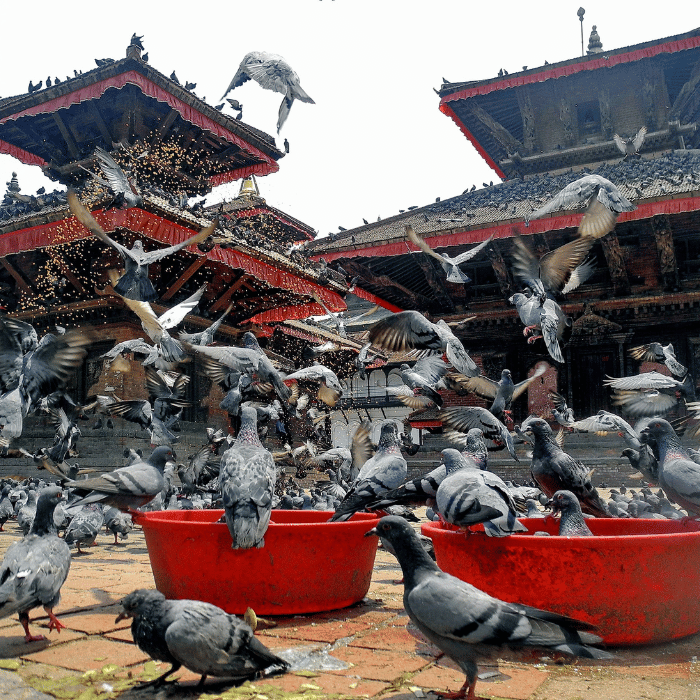
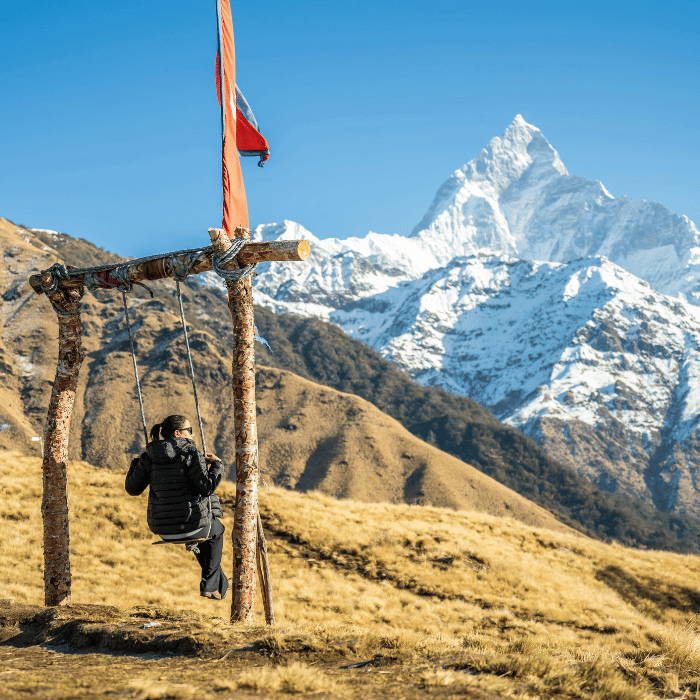
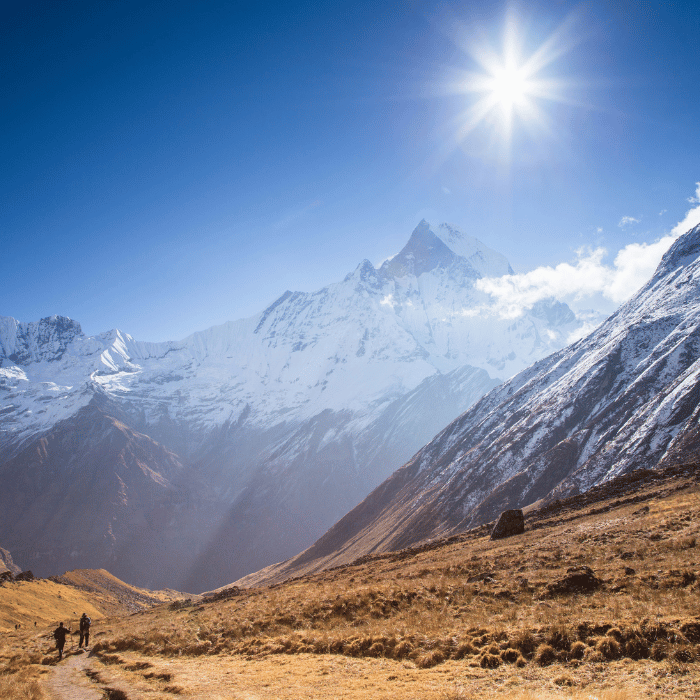
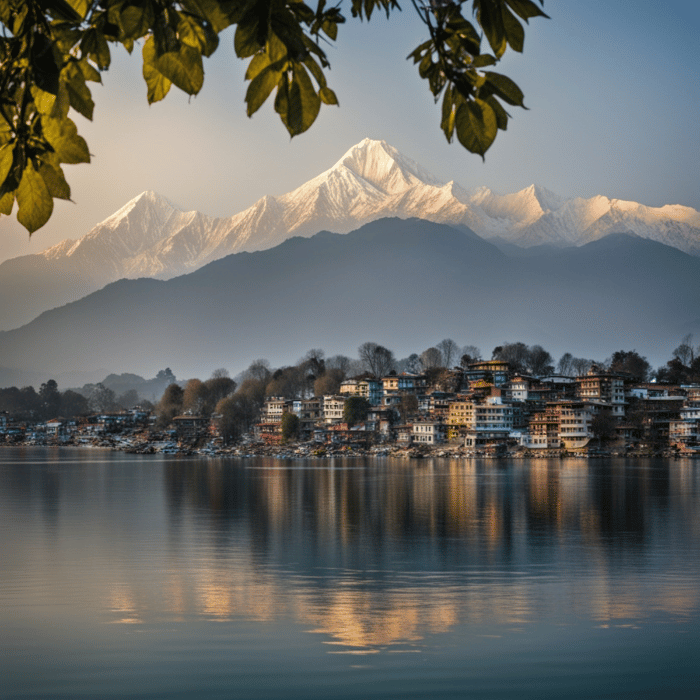
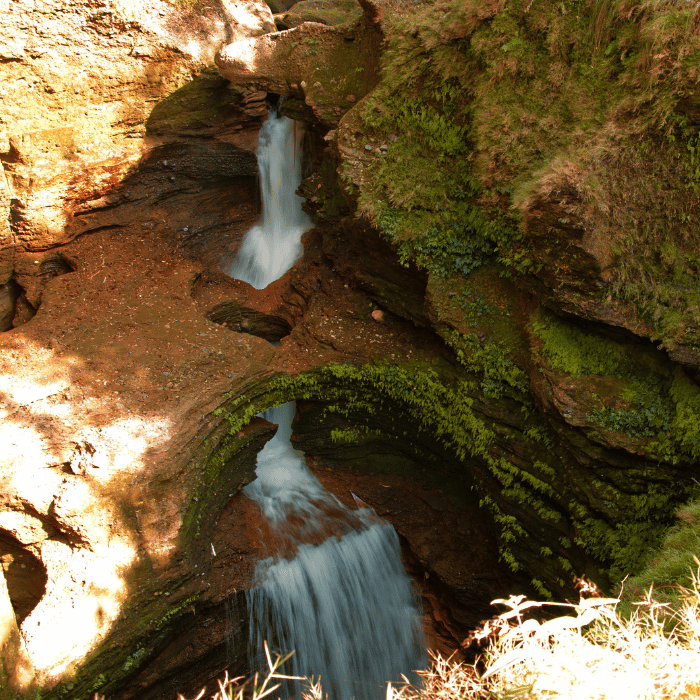


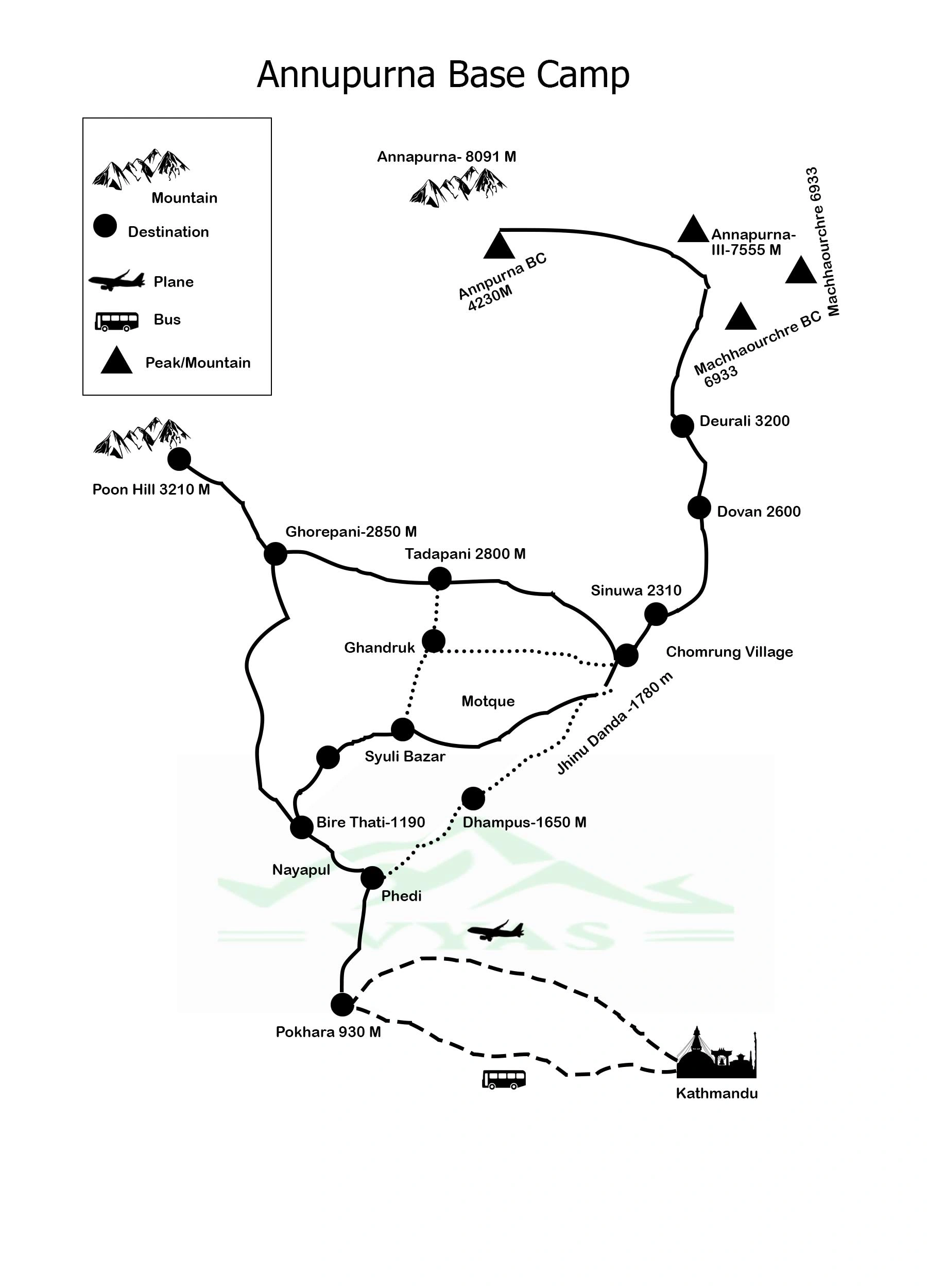






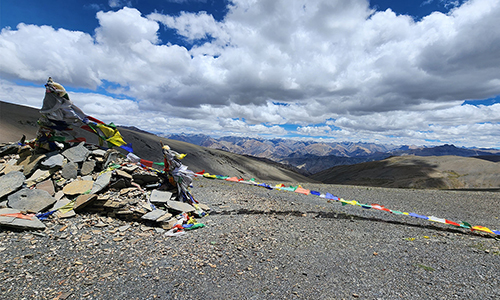

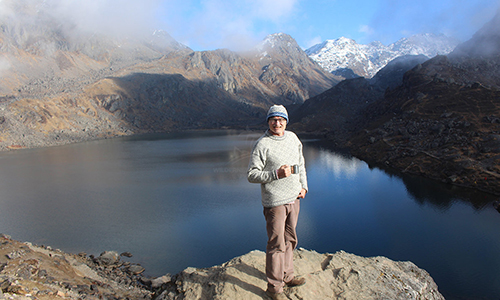


Claire Dubois
2025-06-16 14:08:13
The Annapurna Luxury Trek was the perfect blend of adventure and comfort. The mountain views were spectacular, and the accommodations were far beyond my expectations – cozy lodges with hot showers and warm hospitality. Vyas Trek Nepal made everything seamless. A first-class trekking experience!